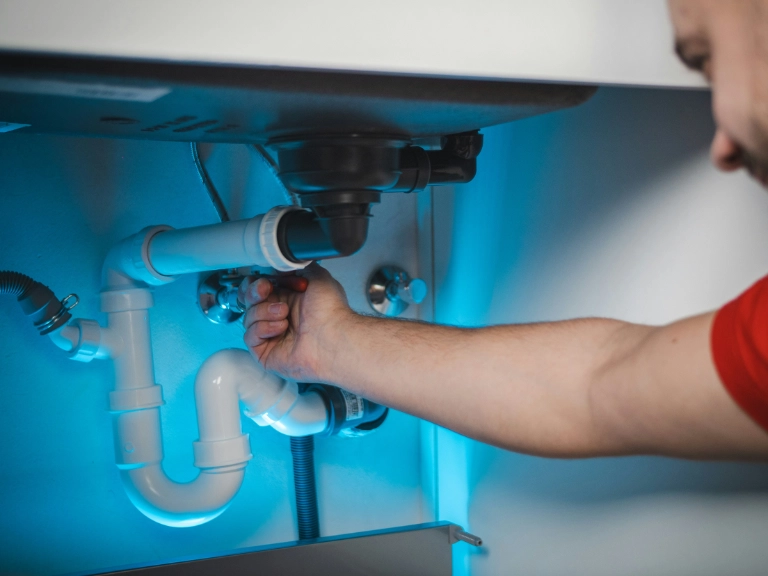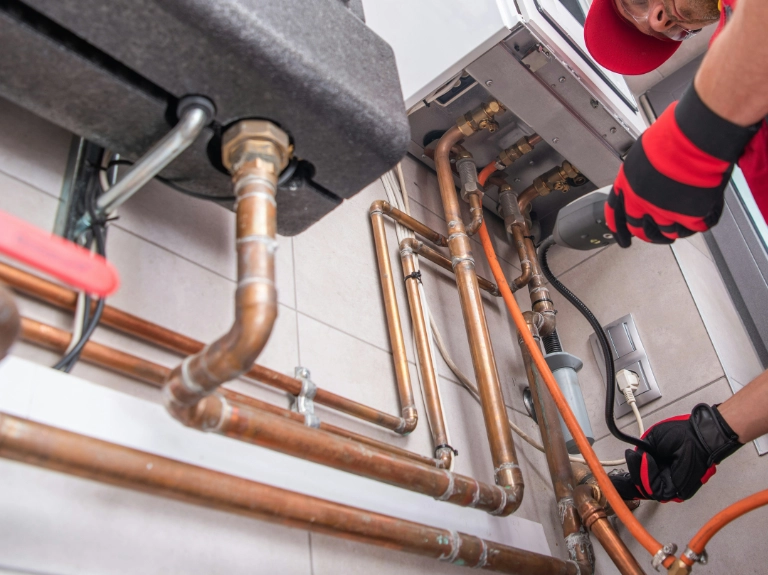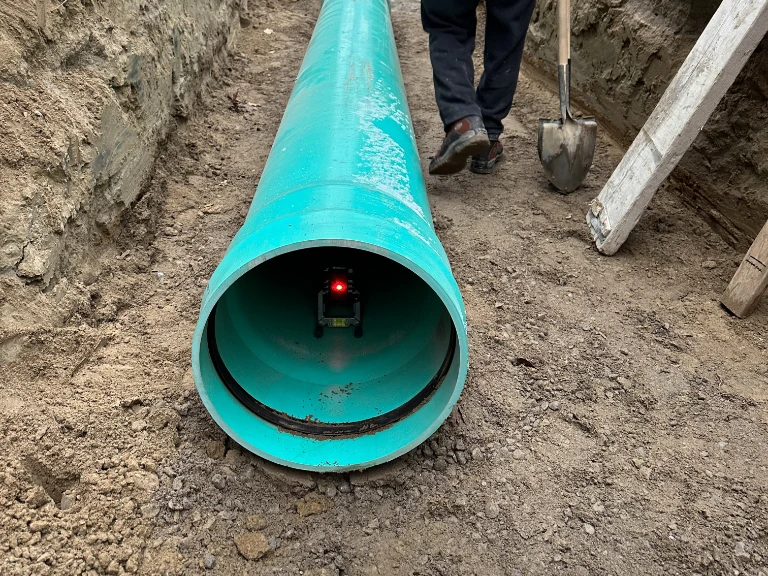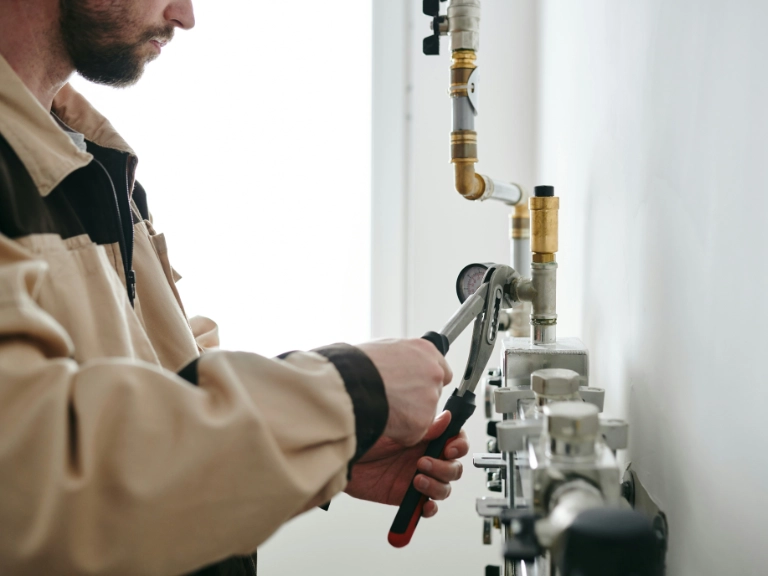Professional sump pump installation, repair, and maintenance services designed to safeguard Toronto basements from groundwater intrusion, heavy rainfall, and sewer-related flooding. We install high-capacity pumps, backup systems, and sewage ejector pumps to keep your home dry and protected year-round.
Basements located below the water table or in high-moisture areas are at constant risk of flooding—especially during storms and spring thaws. Our sump pump installation services provide an effective solution by redirecting groundwater away from your foundation before it can enter your basement. With years of experience serving Toronto’s diverse neighbourhoods, we help homeowners understand their flood risks and choose the right sump pump system for long-term protection.
A sump pump works by collecting excess groundwater in a sump pit and automatically discharging it away from your foundation through a dedicated drain line. When connected to your home’s weeping tile system, the pump activates as water levels rise, preventing moisture buildup and basement leaks. Modern submersible units offer quiet operation, efficient performance, and dependable activation during periods of heavy water flow. Our team installs systems built to withstand Toronto’s climate and soil conditions, ensuring your basement stays dry even during severe weather.
Storms that bring heavy rainfall often cause power outages—the exact moment you need your sump pump the most. To avoid basement flooding during outages, we install battery-powered and water-powered backup sump pump systems. These secondary units automatically activate when the main pump fails or loses power, providing uninterrupted protection. Whether you prefer a deep-cycle battery backup or a water-pressure-powered system, we ensure you have a reliable defence against unexpected failures.
Basement bathrooms, laundry rooms, and other fixtures often sit below the height of the main sewer line, making gravity drainage impossible. For these setups, a sewage ejector pump is essential. Our team installs high-capacity ejector pumps that safely move wastewater upward and out to the correct drainage system. Proper sizing and installation are crucial for long-term performance, and our licensed plumbers ensure your system is compliant, efficient, and built to handle your household needs.
While sump pumps require minimal maintenance, they can develop problems such as loud operation, constant cycling, unusual smells, or failure during heavy storms. These issues may indicate clogged discharge lines, failing pumps, damaged internal components, or sewer backflow stressing the system. If your pump is older than seven years or runs continuously, it’s time for an inspection. We diagnose issues quickly and provide repairs, replacements, or maintenance to restore your system’s performance.
For over a decade, we’ve helped homeowners across Toronto protect their basements with reliable sump pump systems. Whether you need a new installation, a backup pump, an ejector pump, or a full drainage assessment, we’re fully licensed, insured, and committed to quality workmanship. Contact us at 416-252-5557 or reach out online to schedule your consultation and keep your home safeguarded from flooding.
We’re proud to offer the GTA plumbing service that values transparency and puts customers first. Here’s how we do it.

Whether you’re dealing with a plumbing emergency or need help with a leaky faucet, call us or use our online form. We respond promptly, 24/7.

We’ll schedule a convenient time that works for you. Our plumbers arrive on time and fully equipped to get the job done. From small fixes to complex plumbing jobs.

We complete the repair, replacement, or installation professionally. With flat-rate pricing and a 25-year warranty on many services, you get peace of mind and plumbing that works.
No matter the plumbing issue, our team is ready to help. Absolute Draining & Plumbing is committed to resolving your plumbing problems fast, efficiently, and affordably. Get in touch today for a free estimate or immediate support.
We at Absolute Draining & Plumbing provide a wide range of quality plumbing services to satisfy the various demands of Greater Toronto Area companies and homeowners.

Our 24-hour emergency plumbing staff is available to help when you need it most. Our emergency plumbers arrive quickly to handle major leaks, burst pipes, and other urgent issues—trust our emergency team to prevent costly water damage to your home.

Our skilled plumbers serve commercial properties, including offices, restaurants, and retail spaces. Business owners trust us for everything from plumbing installation to emergency repairs, with dependable service that keeps their operations running smoothly.

Say goodbye to clogged drains and recurring blockages. Our qualified plumbers use high-pressure hydro-jetting and advanced camera inspections for effective drain cleaning—perfect for any type of plumbing system in both residential and commercial properties.

Our specialty is time-saving, mess-free, no-dig drain repair technology. Our professional plumbers provide long-lasting results whether you’re dealing with a collapsed drain or a fractured pipe. For your peace of mind, repairs are covered by a 25-year warranty.

Protect your basement from sewage backups with a professionally installed backwater valve. Our plumber team handles everything, including obtaining necessary permits and rebate support. It’s one of the smartest upgrades for your home’s plumbing system.

If your home or business suffered from a plumbing leak or flood, we can help. Our plumbing team provides complete water damage restoration, from cleanup to repairs. We act fast to prevent further damage and mould growth.
Absolute Draining & Plumbing is your reliable local partner whether you're planning plumbing upgrades or dealing with plumbing issues. Providing trustworthy, insured, and licensed plumbing services to the Greater Toronto Area.